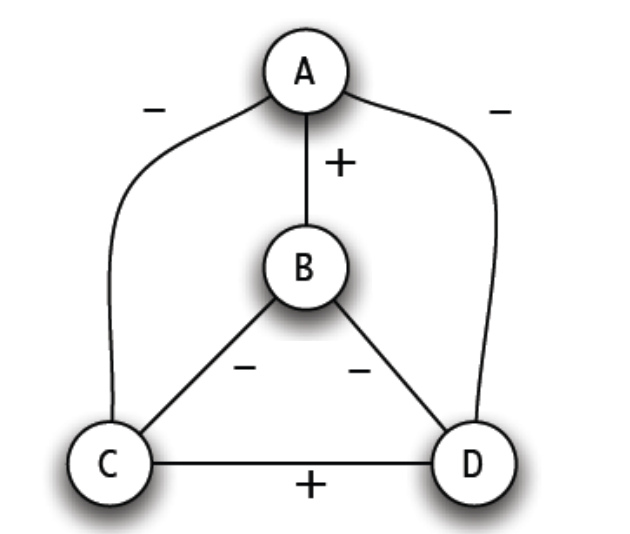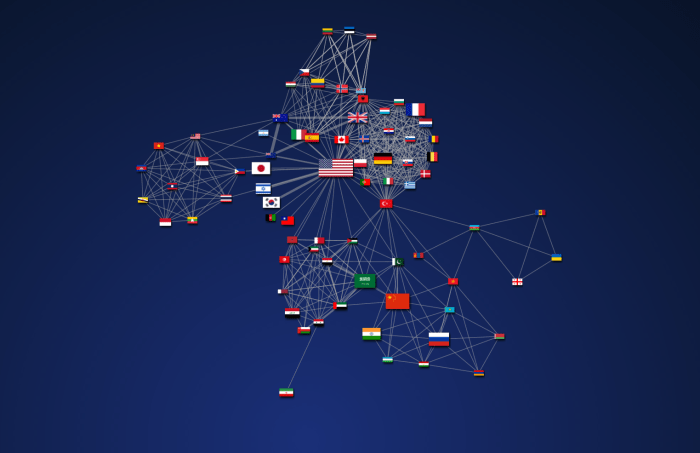In Wednesday’s lecture as we discussed structure balance and how to balance theorem implies local balance and global collations, we had a couple of graphs of international relations of decades ago, which brought my attention to international relations nowadays.
The article pointed out while U.S. trade relations with China have soured, it is evidential that trade relations between China and Russia are blossoming. China and Russia are increasing their economic, political and military ties which are led by China this time. The leaders signed statements committing to “the development of strategic cooperation and comprehensive partnership” between their nations recently. In other words, they are becoming best friends. It is a good example to demonstrate what we learned in a balanced network – the enemy of the enemy is a friend. If we consider China, Russia, and the US as a triple, China and Russia seemed to have a mutual enemy which is the United States, so that they are looking forward to building a positive relationship which is to confront the sanction from their mutual enemy. It forms a balanced network structure between these three countries: China, Russia forms positive edges and they are both negative to the US.

The Theory of Structural Balance also claims that a friend’s enemy is my enemy. If China represents a faction that antagonizes the United States, it should have negative relations to the countries which are allies of the United States. As one of the most countries associated closely with the United States, Canada had its relations to China inevitably deteriorated after the US-China trade war started. It has been revealed that China has halted its import from Canada and Canada arrested Meng, who is the chief financial officer of China’s telecom giant Huawei at the request of the United States. On the other side, Russia has been imposed sanctions by Canada for a long time ago, demonstrated Russia’s negative relation with Canada. If we consider Canada and the US represent another faction, the relations between these four countries demonstrate the Balance Theorem, that is local balance implies global coalitions.

A: Canada, B: US, C: China, D: Russia

Applying the Balance Theorem worldwide, we can clearly see how countries get partitioned into different coalitions and countries tend to build close, strong ties within their own coalitions and fewer connections to outside coalitions. International relations today look very different than decades ago since there are too many factors get involved in and form new balanced structures and coalitions. But no matter how it performs, there is an old adage that always applies: “There are no permanent friends or permanent enemies, only permanent interests. “

Relevant Links:
https://www.cnbc.com/2019/09/27/russia-and-chinas-relationship–how-deep-does-it-go.html
https://www.armscontrol.org/act/2019-10/news/russia-china-criticize-us-missile-test
